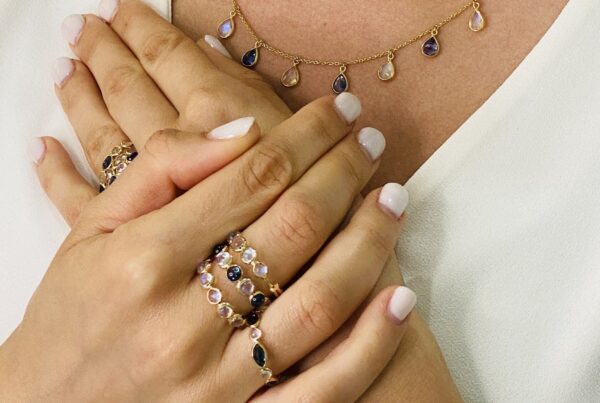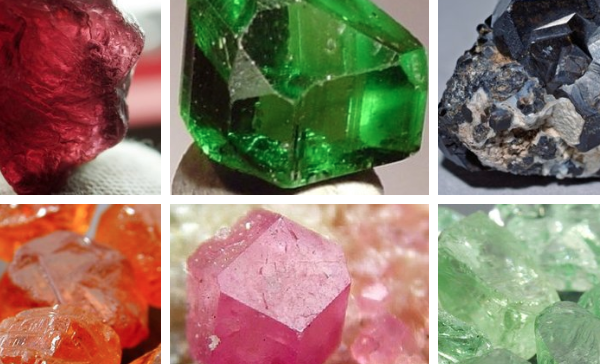29 Facts About Fine Jewelry Care
Jewelry is one of our most cherished and intimate possessions. Jewelry delights our eyes and warms our hearts. We associate certain pieces with some of the happiest moments in our lives. Jewelry is a very personal means of self-expression. The proper care of your fine jewelry treasures can bring you a lifetime of enjoyment. To keep your jewelry beautiful and in excellent condition, follow these 29 facts about fine jewelry care. Some facts may surprise you!
Handle With Care
1) All jewelry items should be handled gently. Do not hold rings by tugging on their gems when putting them on or off. This can cause loosing of the prongs and settings. Be careful not to wear clothing that can snag your necklaces or bracelets.
Natural and Artificial Substances
2) Avoid chemicals such as perspiration, acidic fruits, perfumes, hair care products, soaps, lotions, body oil, dirt, salt water, chlorine, and harsh chemicals. These substances can dull, discolor, and damage your gemstones, precious metals, and pearls.
Hand Washing
3) Take off your rings whenever you wash your hands. Apply lotion before replacing your rings. Remember to always close your sink drain!
Jewelry Is Last
4) Always put your jewelry on last. Brush your teeth, and apply your lotions, fragrance, and hairspray first.
Removal
5) After every wearing, wipe down your items with a soft, clean, smooth cotton fabric cloth or a jewelry polishing cloth. Do not use a polishing cloth on pearls or gemstones. Although your polishing cloth will become darkened over time, it can still be used.
Swimming
6) Keep your fine jewelry aware from hot tubs, chlorine in pools, and salt water.
Avoid Strenuous Activities
7) Be aware that vigorous physical activities can result in jewelry dents, scratches, loose gemstones, and discoloration. It is advisable to remove your rings and bracelets when engaging in sports, gardening, moving heavy objects, using tools, cleaning, carrying luggage, and other rigorous activities.
Beware of Temperature and Light
8) Store your jewelry aware from excessive heat or cold. Do not expose gemstones or pearls to excessive sunlight.
Storage
9) Always store your jewelry so the pieces are never touching each other. Jewelry against jewelry will cause scratches.
10) Use double-pocketed pouches or jewelry boxes with individual, velvet-lined compartments to keep your items separated. Slip your pendant in one pouch pocket and drape your necklace chain in the other. You do not need to remove the chain.
11) Store rings in separate pouch pockets, single pouches, or insert them into the ring slots in your jewelry box. If rings with larger bands do not easily fit in the slots, do not force them. Use pouches or the jewelry compartments, instead.
12) Store sterling silver in airtight plastic bags or wrapped in polishing cloths to reduce tarnishing. Do not use silver cleaner meant for silverware. It will remove the protective anti-tarnish material found on many silver items. The more you wear your sterling silver jewelry, the less it will tarnish. Use a polishing cloth to gently remove tarnish.
13) Do not put pearls or any other organic material beads in in plastic bags.
14) Do not hang your necklaces or bracelets on hooks or on jewelry trees. It can cause stress on the clasps, chain links and stretch stringing materials.
Cleaning
15) Use a very soft brush to gently loosen debris. Soak items, except for pearls, emeralds, and rubies, in warm, soapy water using the mildest detergent. Use a drop of ammonia for clear diamonds and sapphires. Rinse with tepid water, drain, and then pat dry.
16) Polishing cloths are great for gently removing oxidation and small scratches. When using a polishing cloth on chains, make sure not to pull the links. It can put stress on links and weaken them.
17) Rubies and emeralds are fragile. They should be cleaned only with a dry, soft cotton cloth. Do NOT use a soapy water bath for them. Emeralds have an oiled coating that can stripped away by soaps and jewelry cleaners.
18) Raw emeralds are oiled, usually with cedar oil, to brighten their color and give a smoother appearance to their surfaces.
19) Pearls and other strung beads should NOT be bathed in any kind of liquid. Use only a clean, dry, soft, white cotton cloth to gently wipe down the individual pearls or beads. Use a very soft brush to remove debris. Do not stretch the stringing cord.
20) Sterling silver may tarnish if it is soaked for a long period of time.
Wearing Stacked Jewelry
21) Be aware that the fashion trend of wearing multiple rings or bracelets will cause abrasions to your items. Use a polishing cloth to minimize the appearance of tiny scratches..
Professional Care
22) Have your jewelry checked at least once a year by a jeweler. Fine jewelry care requires routine inspection and repair carried out by a trained jeweler. Your items will be scrutinized for worn prongs and settings; gemstone chips, cracks, or abrasions; and weak chain links.
A qualified jeweler will also check for loose bracelet, brooch, and necklace clasps; discolored and scratched metal surfaces; worn knots or stretched cords for pearls and other beaded necklaces; missing or loose gemstones; and can oil emeralds.
23) Superficial scratches can be removed by professional buffing equipment. Buffing will also restore luster to metals with shiny finishes.
24) Multi-strand pearl and beaded necklaces should be totally restrung at the same time. Your necklace may become shorter after repair because restringing will take up the slack from cord stretching and worn knots.
25) Discolored pearls cannot be corrected and may need to be removed. Worn pearls should be placed at the back of the necklace when possible.
26) Metal bead necklaces should not be knotted. The metal edges can upbraid and tear the stringing cord. Metal beads should never be placed between pearls.
27) Your professional jeweler can refresh your white gold items by re-dipping them in rhodium coating. This will restore the bright white-silver color and shine.
28) Jewelers will often use ultrasonic cleaners with special cleaning solutions to remove all filmy products and debris from your jewelry. Certain gemstones and all pearls should never be cleaned by this method. The ultrasonic vibrations and cleaning solution can cause fractures and discoloration, as well as remove protective the finishes on certain substances.
29) Common materials that should NOT be cleaned in ultrasonic cleaners include:
Opals, Filled Fractured Diamonds, Diamonds with Many Inclusions, Colored Diamonds, Synthetic Gems, Cubic Zirconia, Marcasite, Turquoise, Jade, Amber, all types of Pearls, Emeralds, Tanzanite, Tourmalines, Peridot, Malachite, Agates, Onyx, Lapis Lazuli, Mother-of-Pearl, Coral, Copper Plated Jewelry, and Tungsten.
Please note that this is not a complete list of all the types of materials that should not be cleaned in an ultrasonic device. Always ask a qualified jeweler what type of cleaning methods are safe for your items.
The proper care and cleaning of your fine jewelry items will keep them beautiful throughout your lifetime, and often for future generations to enjoy. We hope you have found these 29 facts about fine jewelry care to be helpful.
If you have more questions about how to care for your fine jewelry or watches , just ask us! We will be happy to assist you.



